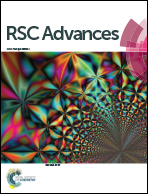Decomposition of S-nitroso species†
Abstract
Nitrosation reactions and subsequent decomposition of S-nitroso (RSNO+) species remain important in many biochemical processes as well as in industrial applications such as chemical gassing of emulsion explosives. This paper develops kinetic mechanisms of gas formation pathways in the decomposition of RSNO+ species, particularly S-nitrosothioacetamide and S-nitrosothiourea, providing new kinetic and thermodynamic constants. At pH levels of 1 and below, decomposition proceeds exclusively via NO formation pathways. With decreasing acidity, molecular nitrogen formation emerges as an equally important product of S-nitrosothiourea, while NO remains the only product for S-nitrosothioacetamide. Theoretical calculations for reaction enthalpies further elucidate the gas formation pathways and proposed mechanisms, fitted to experimental data, afford kinetic rate constants. In both species, the S–N bonds split homolytically with activation energies of 70.9 and 118 kJ mol−1 for S-nitrosothioacetamide and S-nitrosothiourea, respectively. The electron donating effect of methyl substitution in S-nitrosothioacetamide engenders lower activation energies with the bimolecular reaction of RSNO+ and RS occurring within the diffusion controlled regime at an activation energy of 17.6 kJ mol−1. For S-nitrosothiourea, a further bimolecular reaction of two RSNO+ molecules occurs irreversibly with an activation energy of 84.4 kJ mol−1.


 Please wait while we load your content...
Please wait while we load your content...